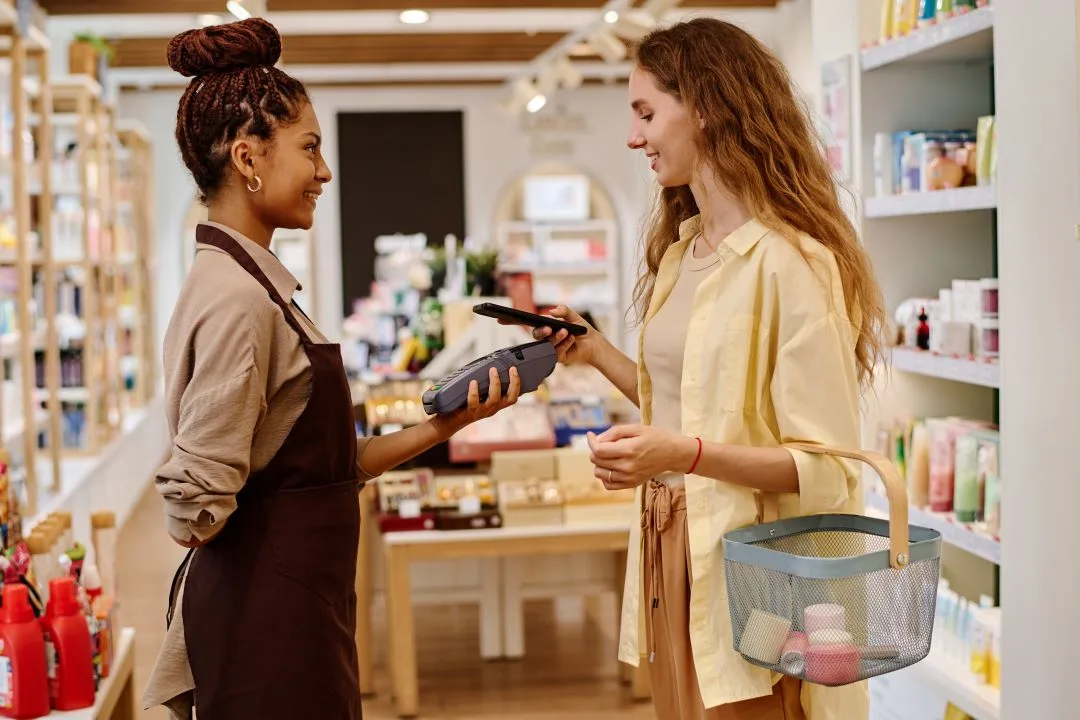
So much has changed in the last 24 months, and consumer payment habits are no exception. Contactless payments via smartphones rose massively and this is expected to continue. Another convenience and safety and hygiene-driven trend the pandemic brought us more recently was an increase in the use of mobile payment wallets via wearable technology from companies such as Apple, Fitbit and Samsung.
Smartphones are now also heavily used for payments, both for contactless and in scanning QR codes to provide information before making a purchase or drive the payment. Both card and mobile contactless card payments have become the norm, boosted by the recent card limit increase in the UK to £100.
Due to real-time payments, businesses and consumers are experiencing a great deal of change in the way they send and receive payments. So what are the top payment trends to watch for next year?
1. The rise of ordering ahead
According to research conducted by the Mercatory Advisory Group, this year, consumers purchased and paid for products online but frequently organised in-store or curbside pick-ups. This trend is consistent amongst all age groups, and it indicates that it’s here to stay for 2022, boosting the remote eCommerce activities and continuing to be as popular as it was during the height of the pandemic when there were strict shopping restrictions in place.
2. Consumers will continue to be at high risk of financial fraud
Bank, credit card, and lease fraud were the types of fraud most reported by consumers this year. The increase in online purchases and more global reliance on mobile services has generally contributed to these higher fraud rates. Financial fraud was already on the increase in 2019, but it has been ramping up during the last two years, fuelled by the pandemic. The good news is that our financial industry is starting to adjust to the newer types of fraud by designing defences to protect its customers more effectively.
3. Payment providers focus on data, security and new technologies
In part due to the increase in fraud threats, there has been a shift in the way consumers want to pay for goods and services – more safely, seamlessly, and using last-gen technology. The financial sector is adapting to these habits by investing in new technologies in a few ways: payment modernisation based on data insights to quantify the ROI of value-added services; more robust security measures for transactions: authentication, tokenisation, fraud verification and provisioning; and innovative technologies: mobile-first, blockchain, biometrics and machine learning.
4. Real-time payments and faster payments will take centre stage
What’s been consuming a lot of the financial services industry’s time this year is the topic of faster payments and real-time payments. An increasing number of financial services providers are moving away from piloting these offerings to full-fledged payment products, for example, offering same-day BACS payments as a first step for adopting real-time payments. The Account-to-Account (A2A) and Business-to-Consumer (B2C) payments are taking place through debit push payments. While there are different levels of adoption of real-time payments networks globally, there is an expectation that some of these networks will start to connect in 2022, which will further facilitate international transactions.
5. Digital wallets and digital banks are continuing to grow
More consumers are moving towards digital wallets payments driven by technology and the ease of use of this payment method. They serve an important population – the unbanked and the underbanked, which at the moment still account for 1 billion people, according to SEPA. As the digital banking industry is experiencing digital disruption, mobile payments, e-bill payments and mobile payments are slowly becoming mainstream. According to InsiderIntelligence, there will be close to 25 million customers who will only hold an account with digitally native banks like Monzo in the UK or Chime in the US in 2022.
Reflections on 2021
As a result of the pandemic, many SMEs have been willing to adapt and embrace new ways of working and processing payments. Payment providers and fintech were able to develop new and innovative solutions that allowed many merchants to continue to trade. As purchases were either conducted online or via cards, due to concerns about Covid, there was a reduction in cash losses due to theft and negligence, and SMEs were spared the high fees associated with processing cash. The pandemic also expedited the adoption of frictionless payment processes so that more merchants were able to offer a full range of payment options. These trends are only going to continue in 2022, so merchants should prepare for what’s to come next year and take advantage of the still-evolving payments landscape.





